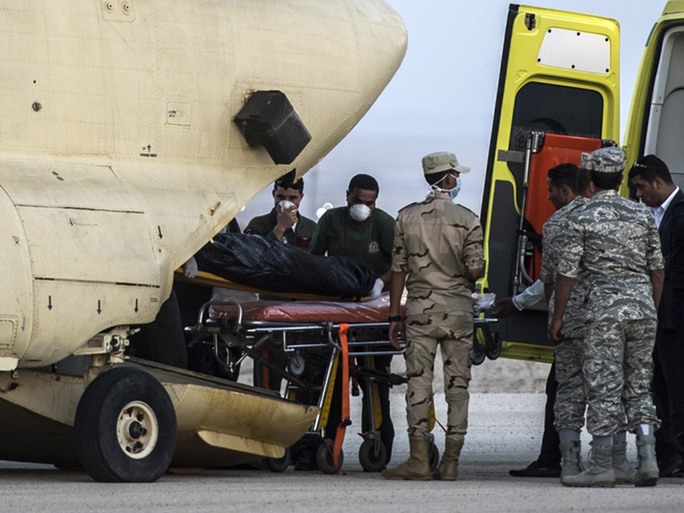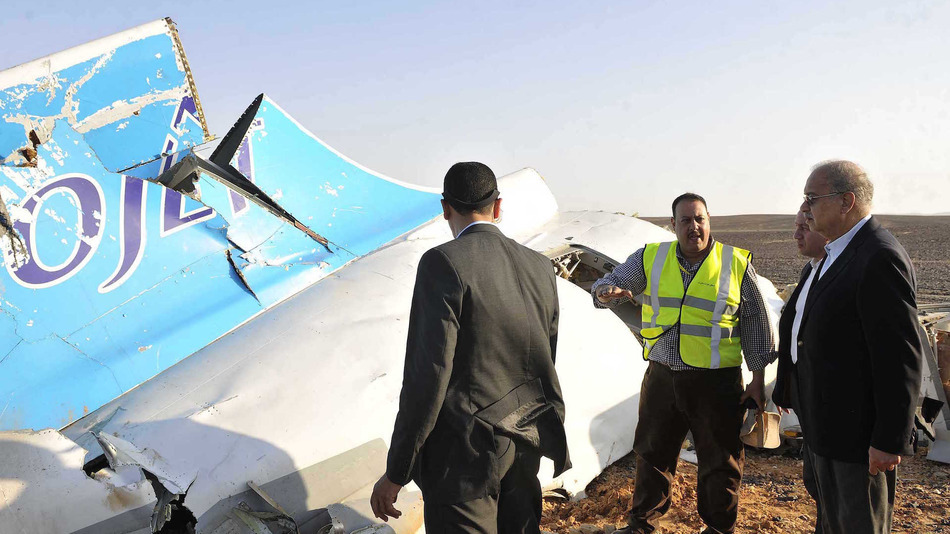As details emerge after the tragic crash of flight KGL-9268 on Saturday, there are still more questions than answers. Speculation is rampant and several sources are coming out with conflicting information.
It will likely be months before we have definitive answers, but here’s what we know and what we don’t about the deadliest airplane crash in Egypt’s history:
[Ed. Note Wednesday, Nov. 4, 2015: Updates have been added to “The Response” and “What We Don’t Know” sections below]
The Airplane
первые фотографии крушения А321 “Когалымавиа” pic.twitter.com/b9tYpIaPhX
— Oleg Panfilov (@OlegPanfilov7) October 31, 2015
Flight KGL-9268 was run by Russian airline Kogalymavia, also known as Metrojet. The plane was an 18-year-old A321-200, which had flown 56,000 hours in nearly 21,000 flights. This type of plane has a good safety record, with only one reported case of fatalities prior to this incident. A jet from the A320 family takes off or lands every 2.5 seconds somewhere in the world.
The St. Petersburg-bound flight took off from Sharm El Sheikh International Airport shortly before 6 AM Cairo time. Contact with the plane was lost 23 minutes after takeoff and the plane crashed near Hasna in the Sinai peninsula. Egyptian Civil Aviation Minister Hossam Kamal said that the pilot reported no difficulties and did not request an emergency landing, as had been reported earlier.
According to FlightRadar24, a flight tracking service based in Sweden, the aircraft was descending rapidly at about 1,800 meters (6,000 feet) per minute when the signal was lost to air traffic control.
The plane broke up mid-air and fragments were scattered over an area of 20 kilometers.
Two black-box recorders were recovered from the crash site but the information contained within could take several days to analyze. Reports state that Egyptian authorities will wait to study the black boxes until international representatives arrive from Russia, France, Germany and Ireland.
Information contained in both black boxes will provide crucial details about the crash. One is a flight data recorder (FDR), which keeps technical data about the flight, and the other is a cockpit voice recorder (CVR), which contains two hours of cockpit audio.
The Passengers

All 224 people on-board the plane were killed — 217 passengers and seven crew members. There were 214 Russians, four Ukrainians and one Belarusian. The youngest passenger was 10 months old and the oldest was 77.
While initial reports stated that bodies of the deceased were being brought to Cairo morgues, more recent reports say that 130 bodies and 40 body parts have arrived in St. Petersburg on a Russian government plane, with another plane expected to arrive Tuesday. Families are reportedly submitting DNA to help identify the victims.
The Response

UPDATE Wednesday, Nov. 4, 2015: The UK government has temporarily suspended flights to and from Sharm El Sheikh International Airport pending further investigation.
Egyptian, Russian, German, French and Irish aviation officials are in Egypt to assist with the investigation.
Polish and German tour groups have cancelled trips to Egypt as a result of the crash.
While Egyptian airspace in the Sinai remains open, several airlines including Emirates, Qatar Airways, Air France and Lufthansa, have rerouted their flights over Sinai out of security concerns.
A day of mourning was observed on Sunday in Russia to remember the victims and the Russian government said it would pay compensation to the families who lost loved ones and help arrange funerals. Outside the Russian embassy in Cairo, people lined the walls with flowers as a tribute to the victims.
What We Don’t Know

We still don’t know the cause of the crash. Many conflicting reports are coming out as the story develops.
UPDATE Wednesday, Nov. 4, 2015: A spokesperson for UK Prime Minister David Cameron has declared that the cause of the crash may have been an on-board explosive device after new, undisclosed details have emerged.
The Deputy Director of Metrojet, Alexander Smirnov, said on Monday, “The only explicable reason for the plane to have been destroyed in mid-air can be specific impact, purely mechanical, physical influence on the aircraft” and that it could not have been technical difficulty or pilot error.
However, investigative sources have claimed that nothing struck the plane from the outside and the head of the Russian Federal Aviation Agency warned against making definitive statements before there is evidence to support them.
There had been previous damage to the tail section of this aircraft when it struck a Cairo runway in 2001. While Kogalymavia insists the plane was completely repaired and this could not have been a factor, the tail section was found separately from the rest of the plane, which has piqued the interest of safety experts and investigators.
ISIS-affiliated terror group Wilayat Sinai claimed responsibility for bringing down the plane, saying that it was revenge for Russian-led airstrikes in Syria. However, this claim has been widely rejected by Egyptian and Russian officials as well as military experts.
Sinai-based militants are known to possess shoulder-launched surface-to-air missiles that would be incapable of bringing down an aircraft flying at an altitude of 9,450m. British military analyst Paul Beaver said a missile that could take down an aircraft “requires a bunch of well-trained people, an integrated air-defense network around them. You can’t just drive up in a vehicle and fire a missile.”
He also said the Sinai desert was well-scrutinized by intelligence agencies, so a missile would have been noticed. That being said, officials said they cannot rule out terrorism as a reason for the crash.
Whether the crash is determined to be technical or terrorist-related, the effect will be devastating to tourism as Russians make up 30-35% of tourists in Egypt.
If the cause is determined to be a “technical malfunction, then this will lead both Russian and Egyptian regulators to impose stricter safety measures and cancel affordable chartered flights, which would significantly reduce the number of Russian tourists.”
If the findings point to terrorism, “this will lead European countries to issue travel bans that would spell ‘an end to the sector as we know it’,” said Magdy Azab, Chairman of Tourism and Developer of Pyramisa Hotels.
WE SAID THIS: Our hearts go out to the families and loved ones of the victims of this tragedy.



